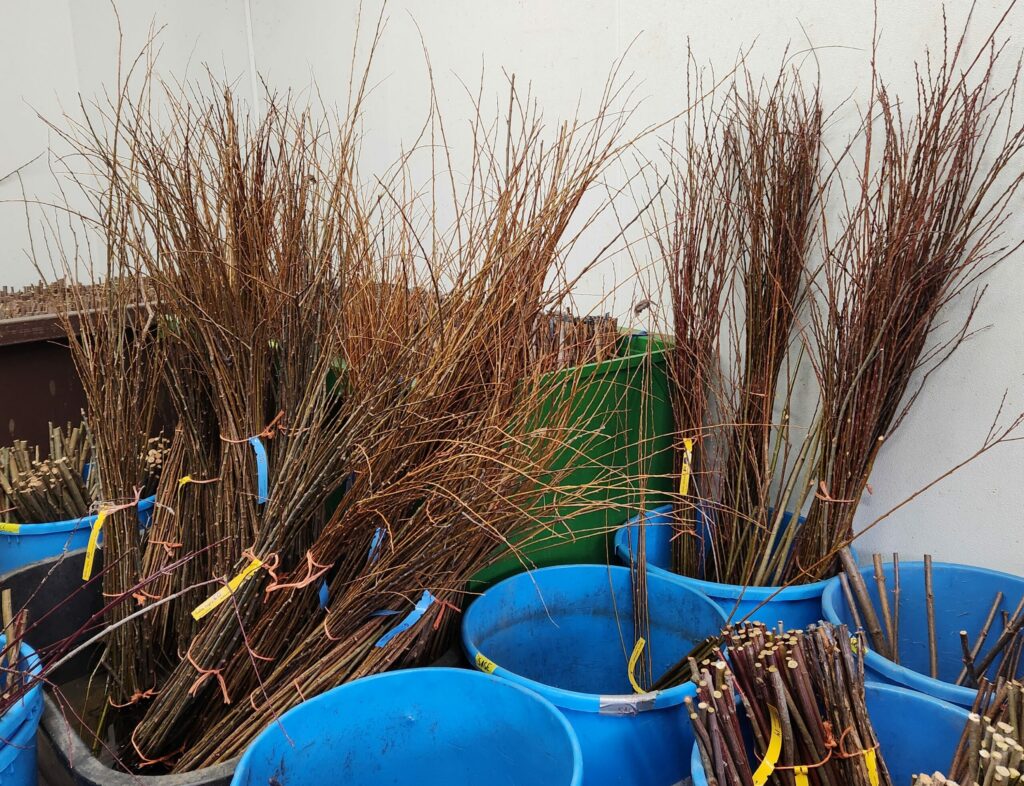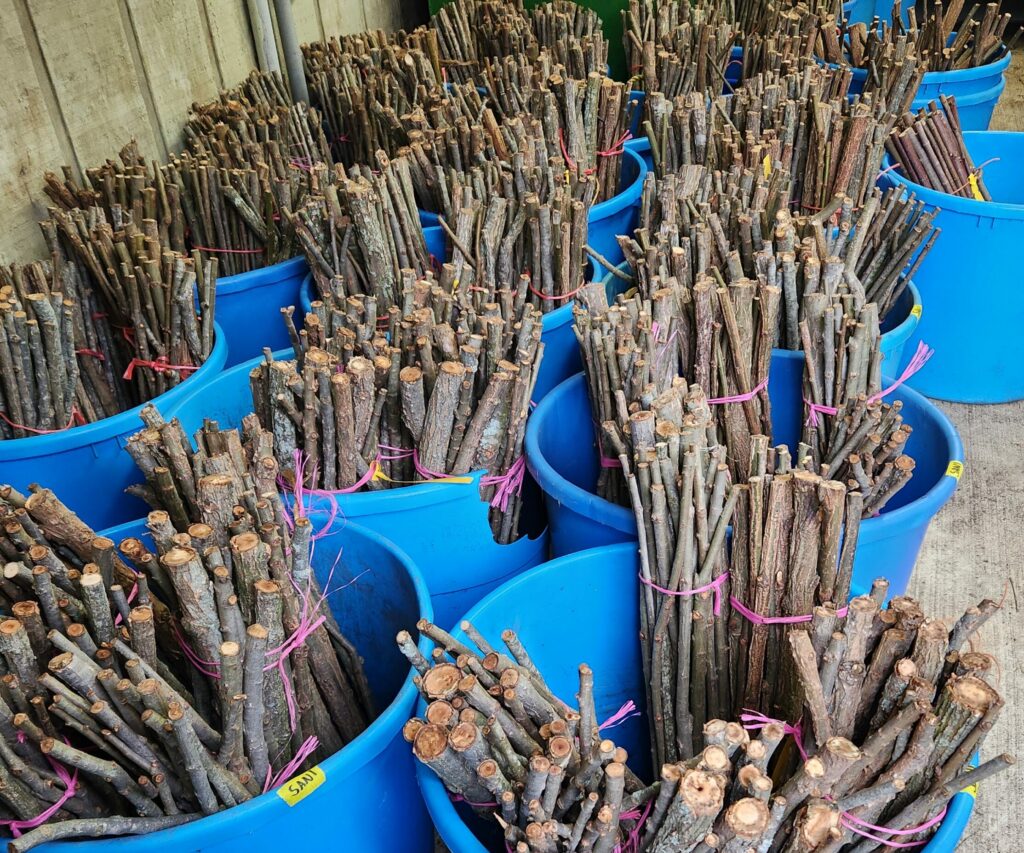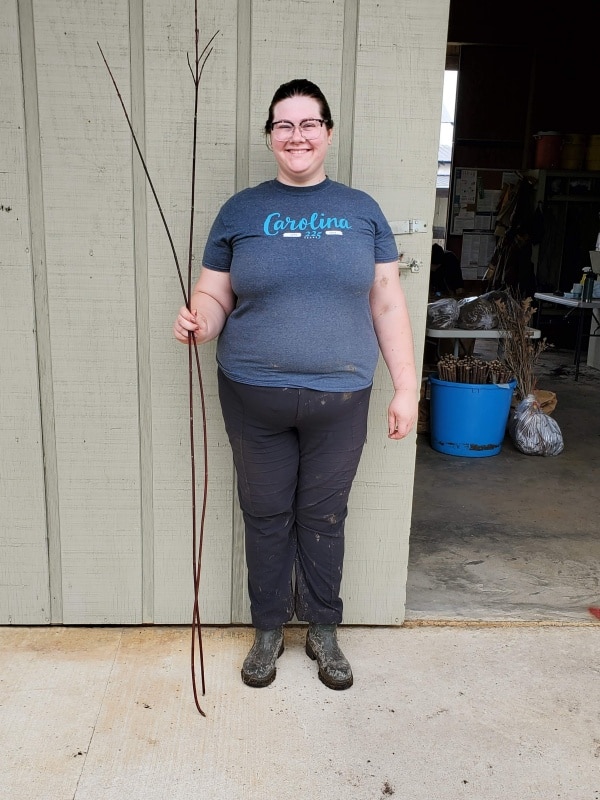Live stakes and whips are ideal for restoration projects and erosion control. They are dormant cuttings of native woody species. We cut and sell them January through mid-March.
The table on this page shows a list of species we regularly cut during dormancy. Contact us with any questions on quantity, availability, or to place an order.

| SPECIES | COMMON NAME |
| Cephalanthus occidentalis | Button bush |
| Physocarpus opulifolius | Ninebark |
| Salix caroliniana | Carolina willow |
| Salix nigra | Black willow |
| Salix sericea | Silky willow |
| Sambucus canadensis | Elderberry |
| Swida amomum | Silky dogwood |
| Symphoricarpos orbiculatus | Coralberry |
Live stakes are usually 3/8″ to 1-1/2″ diameter and 1-2 feet long. Stakes are used alone or driven through erosion control fabric to grow roots which will help hold soil in place.

Our stakes are cut and stored in tubs of water. Please keep the stakes from drying out prior to planting. Drive the stake perpendicularly into the ground (pointed end down) until the stake is at least two-thirds of the way in the ground. If the ground is compacted or rocky, a pilot hole can be driven first. Place stakes 2 to 6 feet apart and tamp soil around stake to prevent air trapping near the stem.
Whips are 3 to 5 feet long and ½” or less in diameter at the base. They are the top part of a branch, so they taper off at one end. Whips can be planted alone, or used in wattles and brush mattresses.
Please keep whips from drying out prior to planting. Whips can be planted by laying them down at an angle and burying them with soil until at least two-thirds of each whip is covered. Whips can also be inserted into the ground, either at an angle or vertical (as described above for live stakes). Whips can be bound together to create wattles or brush mattresses. These structures catch sediment and prevent erosion, and a portion of the whips used will root into the ground and grow into shrubs.
